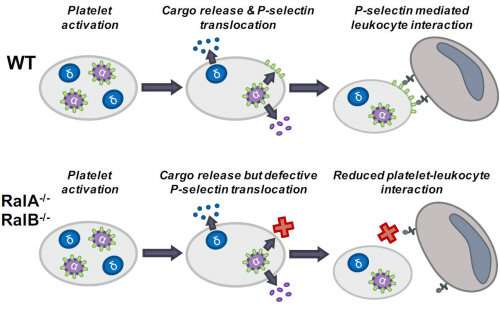Credit: University of Bristol
Research by the University of Bristol has shed light on the way our clotting cells and immune cells control their interactions with each other.
The findings could lead to the development of new treatments for inflammatory diseases such as inflammatory bowel disease, rheumatoid arthritis and asthma.
University researchers studied how two molecular switches, RalA and RalB, control the release of bioactive molecules from platelets, our cells that control blood clotting. The findings reveal a novel role for RalA and RalB in controlling how platelets interact with white blood cells (leukocytes), our immune cells, and contribute to inflammation.
It is hoped that the study, published in Arteriosclerosis, Thrombosis, and Vascular Biology, will lead to the development of new medicines to target RalA and RalB for the treatment of a range of inflammatory conditions.
Lead author and Ph.D. student in the Poole Group, part of Bristol Platelet Group, Andreas Wersäll commented: "Platelets are often thought of as nothing more than cells which stop us bleeding when we cut ourselves. This couldn't be further from the truth and this study showcases the complexity of these small cells as well as a previously unknown signalling pathway within them. I'm hopeful that the findings will lead to further research into this area of platelet function and the development of new treatments for platelet-mediated inflammatory conditions."
More information: Andreas Wersäll et al. Mouse Platelet Ral GTPases Control P-Selectin Surface Expression, Regulating Platelet–Leukocyte Interaction, Arteriosclerosis, Thrombosis, and Vascular Biology (2018). DOI: 10.1161/ATVBAHA.117.310294
Journal information: Arteriosclerosis, Thrombosis and Vascular Biology
Provided by University of Bristol




















